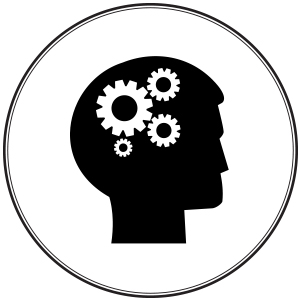What Our Wake-ups Say About Our Way of Life
Snapshots of recent studies

Researchers have found the first physical evidence that night owls and early risers (larks) have different brain structures. In comparing brains scans of night owls, intermediate chronotypes and early risers, they found a reduction in the integrity of night owls’ white matter in the frontal and temporal lobes, cingulate gyrus and corpus callosum—areas associated with depression.
Jessica Rosenberg, Ivan I. Maximov, Martina Reske, Farida Grinberg, N. John Shah. Early to bed, early to rise: Diffusion tensor imaging identifies chronotype-specificity. NeuroImage, Volume 84, 1 January 2014, Pages 428-434.

An older age, male gender and early waking time each showed significant positive correlation with physical activity among toddlers.
Kohyama J. Early rising children are more active than late risers. Neuropsychiatr Dis Treat, 2007 Dec;3(6):959-63.

Research suggests that night owls, more likely to have decreased psychological well-being, are more prone to be heavy smokers and drinkers.
Wittmann M, Paulus M, Roenneberg T. Decreased psychological well-being in late chronotypes is mediated by smoking and alcohol consumption. Subst Use Misuse, 2010;45(1-2):15-30. doi: 10.3109/10826080903498952.

Eveningness has been found to be positively related to cognitive ability, yet negatively related to academic achievement indicators. Also, morningness has been found to have a negative relationship with cognitive ability and a positive correlation with academic achievement.
Franzis Preckel, Anastasiya A. Lipnevich, Sandra Schneider, Richard D. Roberts. Chronotype, cognitive abilities and academic achievement: a meta-analytic investigation. Learning and Individual Differences, Volume 21, pages 483-492, 2011. doi:10.1016/j.lindif.2011.07.003

Social jet lag (when our biological, or circadian, clock and social clocks differ) is believed to be a contributing factor to the epidemic of obesity according to a recent large-scale epidemiological study, which also reports that in 70 percent of the population, biological and social clocks differ by more than an hour.
Till Roenneberg, Karla V. Allebrandt, Martha Merrow, Celine Vetter. Social jetlag and obesity. Current Biology, Volume 22, Issue 10, p939–943, 22 May 2012

Morning people have been found to be more proactive than evening types.
Christoph Randler. Proactive people are morning people. Journal of Applied Social Psychology, Volume 39, Issue 12, pages 2787-2797, December 2009. DOI: 10.1111/j.1559-1816.2009.00549.x

Late bedtimes and late wakeup times have been associated with unfavorable activity and an undesirable weight among adolescents.
Olds TS, Maher CA, Matricciani L. Sleep duration or bed time? Exploring the relationship between sleep habit and weight status and activity patterns. Sleep, 2011 Oct 1;34(10):1299-307. doi: 10.5665/SLEEP.1266.
Early Riser Guide
(January 2015)
